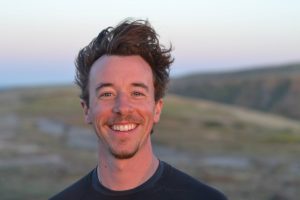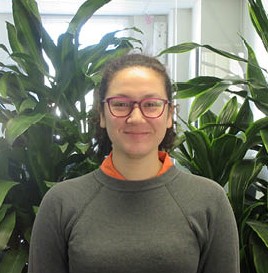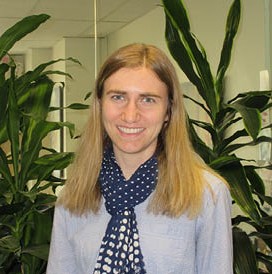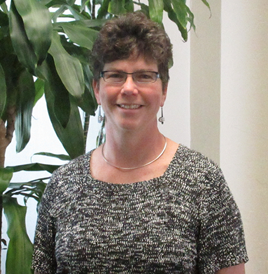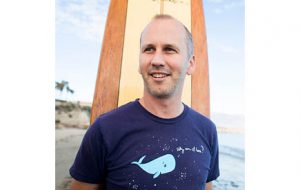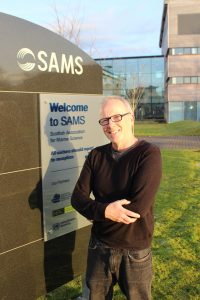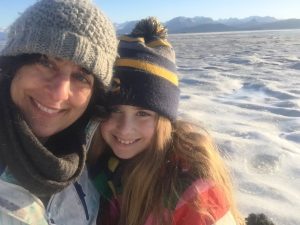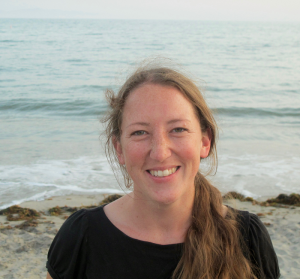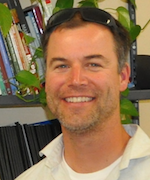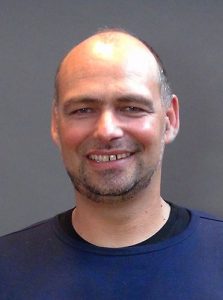Get the latest NCEAS Roundtable information at https://www.nceas.ucsb.edu/roundtable
April 4 – Synth-Pop: NCEAS and the new wave of synthesis science
For over 20 years NCEAS has innovated new synthesis and data science methods in ecology, and has supported diverse teams of scientists in the production of groundbreaking research. Geoff will describe the historical development of synthesis science that led to the creation of NCEAS, and share the status of some current Science for Nature and People Partnership (SNAPP) projects.
Speaker: Geoff Willard
Geoff is Deputy Director of NCEAS and SNAPP. Through his career he has sought to change policy and practice in ways that improve the human relationship with ecosystems, and to cultivate public engagement in science and conservation. As Public Programs Manager at the California Academy of Sciences, he designed educational programs about evolutionary biology and directed a team of educators. He led redwood and salmon restoration projects with Conservation Corps North Bay, served as Treasurer of the Board for RE-volv, and was a Fellow with both EDF Climate Corps and the Coro Center for Civic Leadership. Geoff has a B.A in History from the University of Rochester and a MESM in Conservation Planning from the Bren School of Environmental Science & Management at UCSB.
February 21 – Vanessa Raymond and Kathryn Meyer
Talking about things is hard: Creating common ground with your audience
Vanessa Raymond, NCEAS
EPA’s Great Lakes Long-term Monitoring Programs
Kathryn Meyer, NCEAS
Vanessa Raymond – Talking about things is hard: Creating common ground with your audience
Explaining research or technology to the uninitiated remains a
challenge. When speaker and audience don’t share the same worldview,
the same context, the same acronyms, or the same lexicon, how do you
achieve a shared understanding? How do we create a common ground? As a
political scientist who often finds herself in a room full of ‘hard’
scientists or technologically-minded folks, how can I effectively
exchange information and ideas?
At this roundtable, I’ll share some methods I have used to explain
concepts and give context to audiences who are not in the same field
as me. These include a comicstrip I created for my M.A. defense to
describe the process of working on my thesis, and a zine I wrote to
talk about open data.
Bio
Vanessa comes to the Arctic Data Center from the Geographic
Information Network of Alaska, a research to operations (R2O) group
specializing in satellite imagery processing and distribution at the
University of Alaska Fairbanks. She has an M.A. in Arctic Governance
with a focus on Arctic Security issues, and a BA in Cultural Studies.
She is also a Returned Peace Corps Volunteer (Bulgaria 2009 – 2012).
Vanessa is excited to blend her passion for Arctic research support
and open data / open science at the Arctic Data Center in the role of
Outreach and Training Coordinator.
Kathryn Meyer – EPA’s Great Lakes Long-term Monitoring Programs
Did you know the EPA has a research vessel that monitors all five
Great Lakes? It’s called the R/V Lake Guardian and it’s been sampling
water, aquatic life, sediment and air in the region for nearly 30
years. In addition to a storied shipboard community, these long-term
monitoring programs have generated a lot of data. I’ll share a mix of
ship life and data trends, specifically particulate nutrient data
trends, from the Great Lakes. Your tax dollars help fund the
Guardian’s work, so it’s probably time you knew about it, too.
Bio
Kathryn comes to NCEAS from Chicago, IL, where she worked at the U.S.
EPA Great Lakes National Program Office as an ORISE fellow. At the EPA
she worked on a variety of projects ranging from data analysis and
annual reports to website updates. The most unique part of the job was
getting to travel across all the Great Lakes on sampling surveys
aboard the R/V Lake Guardian. Kathryn received her M.S. from the
University of Michigan School of Natural Resources and Environment,
where her focus was on aquatic ecotoxicology; and her B.S. from
American University in DC.
February 14 – Inside Peek: LTER Network Website
January 31 – The future of NCEAS: where we are at and where we are headed
As a bit of a ‘state of the center’ talk, I will give an overview of our activities and successes from the past year, upcoming activities and plans for the coming year, and the vision and goals for the next five years and beyond.
Speaker: Ben Halpern
Ben is the Director of NCEAS and a Professor at the Bren School of Environmental Science & Management at UCSB. He is the lead scientist for the Ocean Health Index project as well as a Chair in Marine Conservation at Imperial College London as part of the Grand Challenges in Ecosystems and the Environment program. He is also a Senior Fellow at the World Conservation Monitoring Centre, a part of the United Nations Environment Programme. Much of his research addresses Coastal and Marine Spatial Planning (CMSP), including cumulative impact and ecosystem service tradeoff assessments.
January 24 – Going Further “Towards Understanding Marine Biological Impacts of Climate Change”: developing from the NCEAS workshop experience.
This talk will briefly cover our original meta-analysis at NCEAS, and the inspiration we got from trying to develop simple expectations for climate change effects on geographical range shifts and changes in seasonal timing of ecological events. Rates of spatial shifts in climate, mostly based on isotherms, have proved useful first order predictors of likely rates of distribution shifts. We have extended this approach to forecast diversity losses under warming. A major challenge is to test or validate the predicted effects of climate change on ecosystems from spatial shifts in climate. We have recently been exploring the use of community-level measures of the relative dominance of warm and cold water species for this purpose, and gaining insights into the responsiveness of communities to warming in systems across the globe.
Speaker: Mike Burrows
About Mike: I’m a Professor at the Scottish Association for Marine Science in Oban in western Scotland, and have been there since the early 1990s. My research interests range from behavioural ecology, through trophic interactions in communities, spatial patterns in community structure in relation to waves and phytoplankton, to long-term change in populations and communities – mostly on intertidal and shallow water rock and sand.
December 6 – Whats for lunch? A lunchtime exploration of juvenile salmon diets in the Kachemak Bay area
Watershed ecology is all about connections, and one of the most important ways we measure track connections is through the food web. At KBNERR’s watershed research, we explore how landscapes processes support juvenile salmon in many different parts of the watershed, from headwater streams to estuaries. Those studies often involve learning what the salmon are eating, and this presentation will showcase several examples of what we’ve learned. For this talk, we’re going to take a look at juvenile salmon diets from several different locales. We’ll begin in the ‘headwater stream district’ – the uppermost branches of the watershed. These are very small streams that are very tightly connected to the surrounding landscape. Downstream areas receive flow from upstream sources, but headwaters are the beginning so all of the food in headwaters must be generated from nearby sources. Next we’ll travel all the way down to the other end of the watershed, where the rivers meet the sea-the estuaries. Here we have the influence of the ocean tides and the freshwater watershed- we’ll call this ‘fusion cuisine’. We’ll also take a look at imported foods and junk food in in juvenile salmon diets in our area.
Speaker: Coowe Walker
Coowe is the Program Watershed Ecologist and acting Research Coordinator for the Kachemak Bay National Estuarine Research Reserve (KBNERR), located in Homer, Alaska. She works collaboratively with colleagues from universities across the US to conduct research that improves understanding of how landscapes are connected with aquatic systems, and how human activities affect those systems. She has been with KBNERR for 18 years, and enjoys celebrating grant successes with single malt scotch. She lives with her husband, son, daughter, two dogs, eight chickens, cat and two guinea pigs at the head of Kachemak Bay.
November 29 – Forecasting Population Growth of the Endangered North Atlantic Right Whale in a Changing Environment
The North Atlantic right whale, an endangered species with roughly 500 individuals remaining, is currently the focus of conservation efforts aimed at reducing mortality rates associated with ship strikes and entanglement in fishing gear. Consistent monitoring of the population since 1980 has revealed evidence that climate-associated changes in prey availability have played an important role in the population’s recovery. The considerable inter-decadal differences observed in population growth coincide with remote Arctic and North Atlantic oceanographic processes that link to the Gulf of Maine ecosystem. Using capture-recapture models, I will quantify the role of prey availability on right whale demographic transitional probabilities and use a corresponding demographic model to forecast population growth rates into the next century. Contrary to previous predictions, the right whale population is projected to recover in the future as long as prey availability and mortality rates remain within the ranges observed during 1980-2012. However, recent events indicate a northward range shift in right whale prey, potentially resulting in decreased prey availability and/or an expansion of right whale habitat into unprotected waters. An annual increase in the number of whale deaths comparable to that observed during the summer 2017 mass mortality event will cause a decline to extinction, even under conditions of normal prey availability. This study highlights the importance of understanding the oceanographic context for observed population changes when evaluating the efficacy of conservation management plans for endangered marine species.
Speaker: Erin Meyer-Gutbrod
Erin is a postdoctoral scholar with the Marine Science Institute at the University of California, Santa Barbara. She is broadly interested in assessing ecosystem response to anthropogenic impacts, with a focus on commercially valuable and at-risk species. She is currently conducting a net environmental benefit analysis of oil and gas platform decommissioning scenarios in the Southern California Bight.
Erin’s Website: https://meyer–gutbrod.weebly.
November 15 – Mobile technologies for fisheries management and enforcement
We carry in our pockets powerful computers and sensors everywhere we go, even when we go to sea. How can we use the special capabilities of mobile devices to help manage fisheries – or even to aid enforcement of fisheries regulations? After surveying the current state of mobile hardware and software, we’ll look at two concrete examples: eCatch, a commercial fishing logbook app in use by The Nature Conservancy; and eFins, a regulation enforcement aid designed for the CA Dept. of Fish & Wildlife. We’ll step through the lessons learned from both apps. Finally, we’ll discuss the emerging capabilities of mobile devices and ways to utilize those new capabilities for fisheries goals.
Speaker: Todd Bryan
Todd works on the design and implementation of SeaSketch. He has extensive experience in commercial software development, having served as tech lead for GoToMeeting and GoToWebinar at Citrix Online. He was also one of the initial employees at the cloud computing firm RightScale
November 1 – Tipping points, recovery potential and baselines in marine systems
Large-scale changes in marine ecosystems with significant both environmental and economic consequences are observed in increasing numbers worldwide. Alterations in structure and functioning of marine ecosystems have been increasingly reported through the world in relation to overfishing, climate change and for example eutrophication. These pronounced and abrupt multi-trophic level reorganizations of large-scale ecosystems are usually termed ecosystem regime shifts. In my talk, I will provide an overview of some main reported regime shifts in marine ecosystems in relation to potential underlying mechanisms. To exemplify the existence of several potential ecosystem states, I will present the Baltic Sea as a case study, as it offers long-term monitoring data. My presentation will include results from state-of-the-art statistical analysis allowing the detection of non-linearity and thresholds in food-web interactions and their potential to recover. The results suggest that shifts in ecological and economic baselines can lead to higher economic uncertainty and costs for exploited ecosystems, in particular under climate change. Several research needs in the field of regime shifts, recovery and baselines will be discussed.
Speaker: Thorsten Blenckner
Thorsten is currently an Associate Professor and leader of the Marine Theme, at the Stockholm Resilience Centre, Stockholm University, Sweden. He has a background in aquatic ecology, climate change and ecosystem processes and function.

